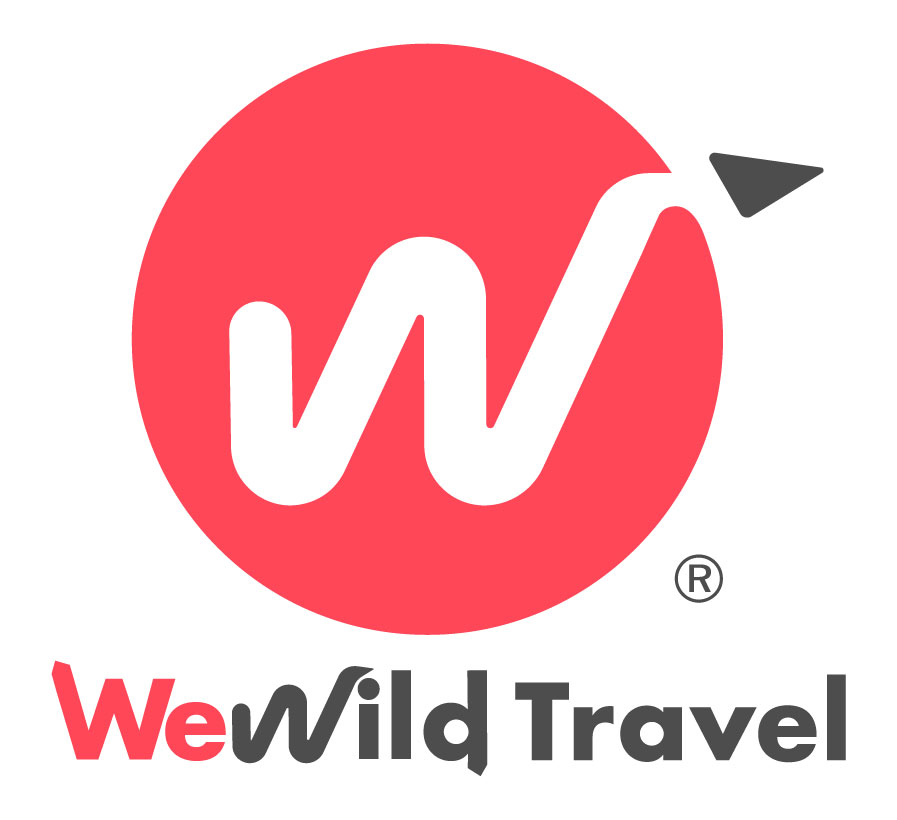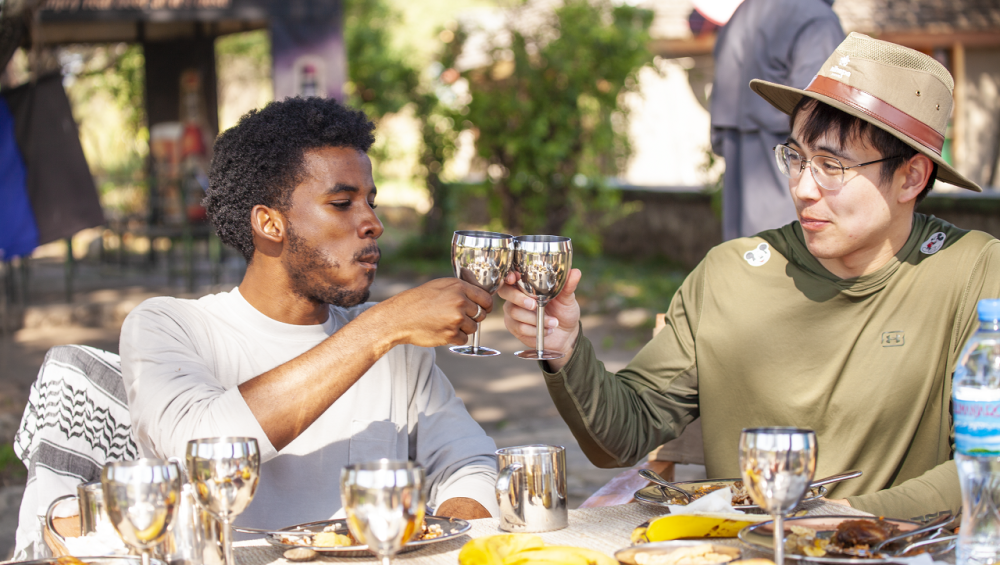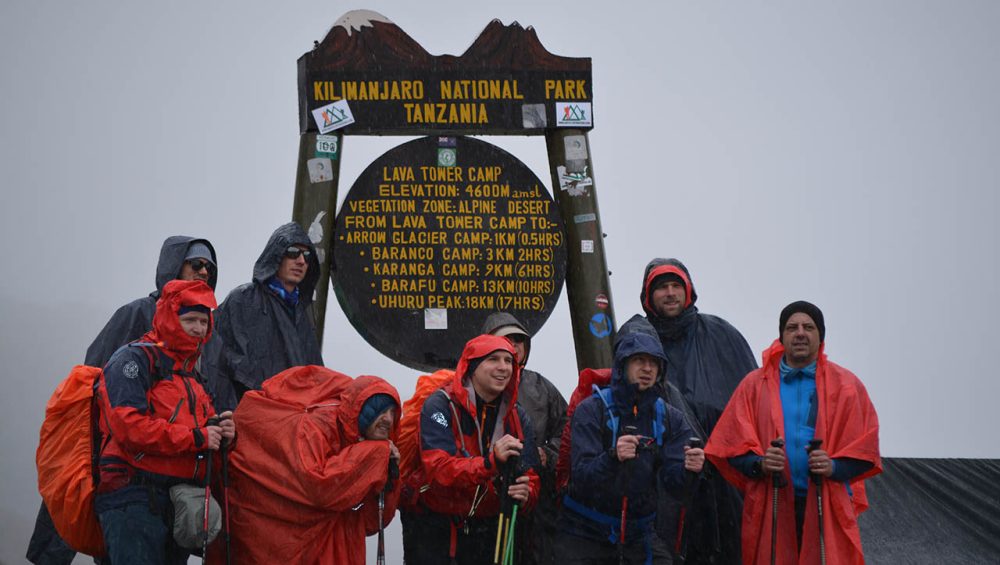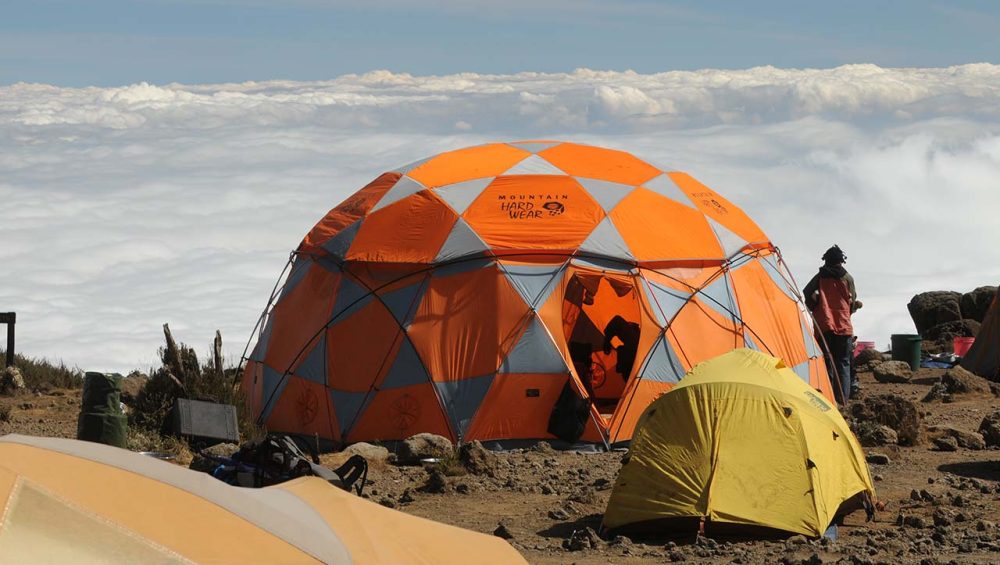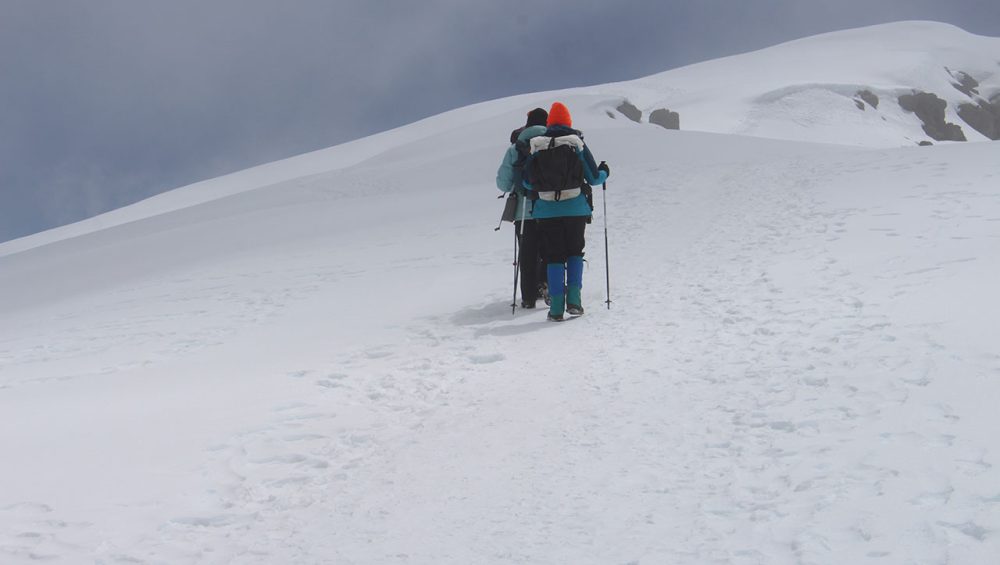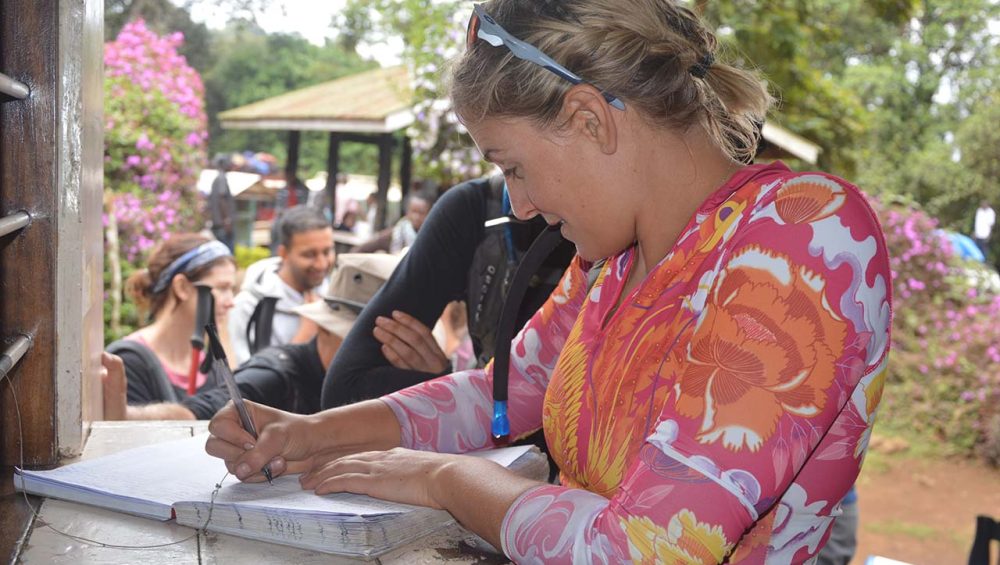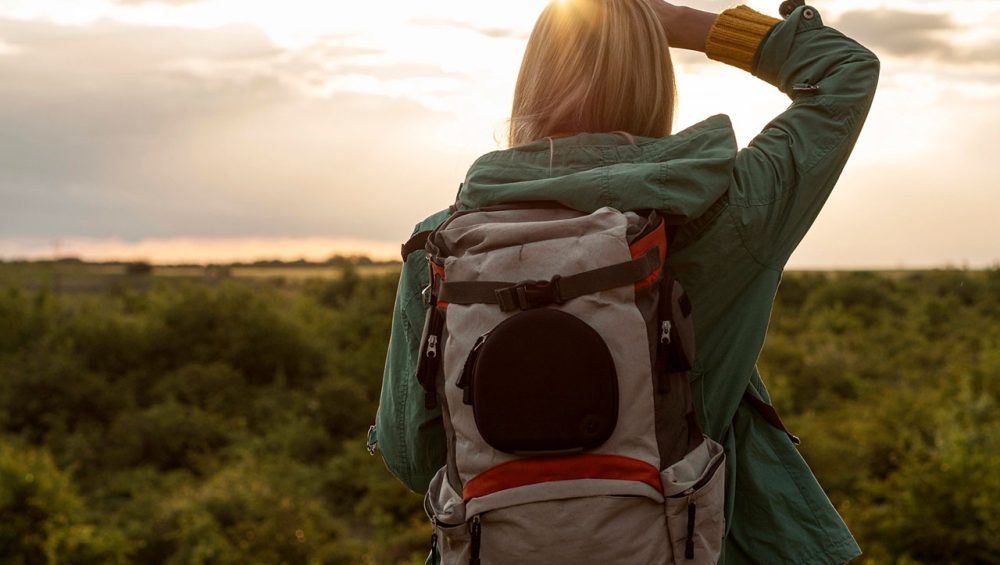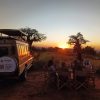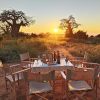Best Season for serengeti safari
Estimated reading time: 15 minutes
The Best Season for Serengeti Safaris: A Complete Guide
The Serengeti, one of Africa’s most iconic safari destinations, is on many travelers’ bucket lists—and for good reason. Home to the Great Migration, the Big Five, and some of the most breathtaking landscapes on Earth, the Serengeti offers something magical year-round. But if you’re wondering when The Best Season For Serengeti Safaris,
The ideal Season to explore the Serengeti is between January and February or from June to October. However, with its incredible abundance of wildlife, the Serengeti promises an unforgettable safari adventure throughout the year. Let break it down month by month to help you plan your perfect adventure.
Table of contents
- The Best Season for Serengeti Safaris: A Complete Guide
- June and July: The Prime Time for the Great Migration
- January and February: The Calving Season
- November to March: Green Season and Bird Watching
- Choosing The Best Season For Serengeti Safaris
- Main Attractions of Serengeti National Park
- The Best Season For Serengeti Safaris : Final Thoughts
- Activities in Serengeti National Park
- Ultimate Serengeti safari tour in Tanzania for 2025/2026
- The Best Season For Serengeti Safaris ; Price Guide
- Schedule a Visit
June and July: The Prime Time for the Great Migration
If witnessing the Great Migration is at the top of your list, then June and July are the best months to visit the Serengeti.
The Great Migration: The wildebeest and zebra herds migrate through the western and northern Serengeti to the Maasai Mara in Kenya. One of the most spectacular sights to behold is the river crossings at the Grumeti and Mara Rivers. With thousands of animals confronting waters full of crocodiles, the tension and thrill are palpable—a once-in-a-lifetime experience.
Best Weather: June and July are in the dry season, so clear blue skies, pleasant temperatures, and little rain. The grass is also shorter, so it is easier to see animals, and wildlife also converges around the few remaining water sources, making your chances of dramatic sightings better.
A Photographer’s Paradise: With the golden light, open plains, and fantastic animal action, this is a photographer’s paradise.
January and February: The Calving Season
For those interested in a different kind of Serengeti experience, January and February offer something truly special—the calving season.
Calving Season: These months see the southern Serengeti, especially the Ndutu area, transformed into the wildebeest calving ground for thousands of calves. This also draws predators such as lions, cheetahs, and hyenas, which brings with it the ferocious predator-prey drama. If the cycle of life is your thing, visit during these months.
Greens Lush Landscapes: Following the short rains in November and December, the Serengeti becomes green and lush, providing a stunning backdrop for your safari. The new-born animals against the green grasslands are perfect for great photography.
Less Crowds: January and February receive fewer crowds compared to the high migration months, providing a less crowded and more intimate safari experience.
November to March: Green Season and Bird Watching
If you prefer fewer crowds and don’t mind a bit of rain, visiting the Serengeti between November and March offers its own unique advantages.
- Green Season: The period following the short rains brings the Serengeti to life with lush greenery and blooming wildflowers. While the wildlife is more dispersed, the landscape’s beauty makes up for it. This season is also great for capturing vibrant, colorful photographs.
- Bird Watching Paradise: November to March is also the best time for bird watchers, as migratory birds from Europe and Asia flock to the Serengeti. With over 500 species of birds, including flamingos, ostriches, and vultures, the Serengeti becomes a birder’s paradise.
- Great Value: This is considered the low season, so you’ll find more availability and better deals on accommodations and safari packages. The parks are less crowded, offering a more peaceful and private experience.
Choosing The Best Season For Serengeti Safaris
The Best Season For Serengeti Safaris ultimately depends on what you want to experience:
June and July: For the drama of the Great Migration and river crossings.
January and February: For the calving season and vibrant landscapes.
November to March: For lush scenery, bird watching, and fewer tourists.
No matter when you choose to visit, the Serengeti promises an unforgettable safari experience. Whether you’re chasing the herds, marveling at newborn calves, or enjoying the serenity of the green season, the Serengeti’s timeless beauty will leave you in awe. Happy safari planning!
Read More:- The Best Time to Experience Tanzania’s Northern Circuit
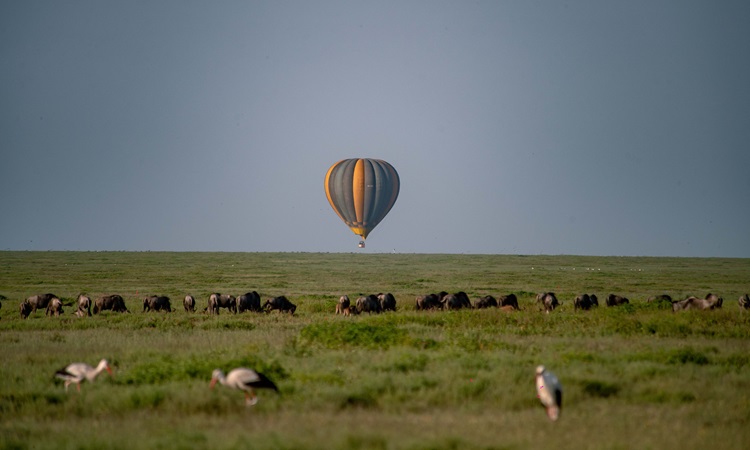
Main Attractions of Serengeti National Park
Serengeti National Park is one of the most famous and celebrated wildlife reserves in the world, renowned for its vast plains, diverse ecosystems, and incredible wildlife. Whether you’re a first-time visitor or a seasoned safari enthusiast, the Serengeti offers a wealth of attractions that promise to leave you in awe. Here’s a guide to the main attractions that make the Serengeti a must-visit destination.
1. The Great Migration
The Great Migration is undoubtedly the Serengeti’s most famous attraction and one of nature’s greatest spectacles.
- What It Is: Each year, over 1.5 million wildebeest, accompanied by hundreds of thousands of zebras and gazelles, make a circular journey across the Serengeti and into the Maasai Mara in Kenya. This epic migration is driven by the search for fresh grazing and water.
- When to See It: The migration occurs year-round, but the most dramatic events, such as the river crossings at the Grumeti and Mara Rivers, typically happen between June and September. The calving season, when thousands of wildebeest calves are born, occurs from January to February in the southern Serengeti.
- Why It’s Special: The Great Migration is not only a massive movement of animals but also a showcase of predator-prey interactions, with lions, cheetahs, and crocodiles lying in wait.
2. The Big Five
The Serengeti is home to Africa’s legendary Big Five: lions, leopards, elephants, buffalo, and rhinoceros.
- Lions: The Serengeti is particularly famous for its large lion population. These majestic predators are often seen lazing on the plains or hunting in prides.
- Leopards: Elusive and solitary, leopards are often spotted in the trees along riverbanks, particularly in the Seronera area of central Serengeti.
- Elephants: Large herds of elephants are commonly seen, especially in the northern Serengeti, where they roam the savannah and woodlands.
- Buffalo: The Serengeti hosts large herds of buffalo, often seen grazing in the grasslands.
- Rhinos: While rhino sightings are rare due to their endangered status, they can sometimes be seen in the Moru Kopjes area in the central Serengeti.
3. The Serengeti Plains
The vast, open plains of the Serengeti are iconic and provide some of the most breathtaking landscapes in Africa.
- Endless Horizons: The Serengeti’s name means “endless plains” in the Maasai language, and this description is fitting. The flat, expansive grasslands seem to stretch on forever, providing a stunning backdrop for wildlife viewing.
- Wildlife Abundance: The plains are home to an abundance of wildlife, from grazing herbivores like wildebeest and zebras to the predators that follow them, including lions, cheetahs, and hyenas.
- Photography: The wide-open spaces, dramatic skies, and abundant wildlife make the plains a photographer’s paradise, especially during sunrise and sunset.
4. Seronera Valley
The Seronera Valley, located in the central Serengeti, is known as the park’s “big cat capital.”
- Prime Wildlife Viewing: The Seronera Valley is one of the best places in the Serengeti to see predators, particularly lions, leopards, and cheetahs. The area’s abundance of prey attracts these big cats, making it a hotspot for wildlife enthusiasts.
- Scenic Landscapes: The valley is characterized by its mix of open plains, riverine forests, and granite kopjes (rocky outcrops), providing diverse habitats for a variety of animals.
- All-Year Access: Unlike some parts of the Serengeti, the Seronera Valley offers good wildlife viewing year-round, making it a central hub for safari activities.
5. The Mara River
The Mara River in the northern Serengeti is the site of one of the most dramatic events in the Great Migration—the river crossings.
- River Crossings: During the migration, vast herds of wildebeest and zebras must cross the Mara River, facing the danger of crocodile attacks and strong currents. This event, typically occurring between July and September, is one of the most sought-after experiences for safari-goers.
- Stunning Scenery: The river itself is beautiful, with lush vegetation along its banks and plenty of wildlife, including hippos and crocodiles, residing in the water.
- Unique Wildlife Encounters: In addition to the river crossings, the area around the Mara River offers excellent wildlife viewing, including sightings of predators like lions and leopards.
6. The Kopjes
Kopjes, or rocky outcrops, are unique geological formations scattered throughout the Serengeti, and they play an important role in the park’s ecosystem.
- Wildlife Havens: These granite formations provide shelter and vantage points for many animals, particularly lions, leopards, and hyraxes. The Moru Kopjes in the central Serengeti are especially famous for their resident lion prides.
- Cultural Significance: Some kopjes, such as the Moru Kopjes, feature ancient Maasai rock paintings and Gong Rocks, where the Maasai once communicated by striking the rocks to produce sounds.
- Scenic Beauty: Kopjes offer striking contrasts to the flat plains, creating picturesque landscapes and excellent photo opportunities.
7. The Grumeti River
The Grumeti River, located in the western Serengeti, is another key area for witnessing the Great Migration and its associated drama.
- Migration Crossings: Like the Mara River, the Grumeti River is a major obstacle for migrating wildebeest and zebras. The crossings here, typically occurring in June and July, are less crowded with tourists than those at the Mara, offering a more exclusive viewing experience.
- Resident Wildlife: The river is home to a large population of crocodiles and hippos, and the surrounding area is rich in other wildlife, including elephants, buffalo, and various antelope species.
- Private Concessions: The Grumeti area includes several private concessions, such as Singita Grumeti, where guests can enjoy exclusive safari experiences, including walking safaris and night drives.
8. Ndutu Region
The Ndutu region, located in the southern Serengeti and part of the Ngorongoro Conservation Area, is famous for the calving season.
- Calving Season: Between January and February, the vast plains of Ndutu become the birthing ground for hundreds of thousands of wildebeest calves. This period attracts numerous predators, offering incredible opportunities to witness predator-prey interactions.
- Diverse Wildlife: In addition to the wildebeest, Ndutu is home to a variety of other animals, including zebras, gazelles, lions, and cheetahs. The region’s woodlands and lakes also attract a rich birdlife.
- Scenic Landscapes: The Ndutu area features a mix of acacia woodlands, alkaline lakes, and open plains, creating a diverse and beautiful environment for safari exploration.
9. Balloon Safaris
A hot air balloon safari over the Serengeti offers a unique perspective of the park’s vast landscapes and wildlife.
- Bird’s-Eye View: Floating above the plains at sunrise, you can witness the Serengeti from a completely different angle. The aerial view provides an unparalleled opportunity to observe the wildlife and appreciate the scale and beauty of the landscape.
- Silent Glide: The tranquility of a balloon safari, with only the occasional burst of the burner to break the silence, allows for peaceful and unobtrusive wildlife viewing.
- Unforgettable Experience: After your flight, most balloon safaris include a champagne breakfast in the bush, making it a truly unforgettable experience.
Book Now:- Tanzania Tour cost 2025-2026
10. Bird Watching
The Serengeti is a paradise for bird watchers, with over 500 species of birds recorded in the park.
- Diverse Habitats: The park’s varied habitats, including rivers, woodlands, grasslands, and kopjes, support a wide range of bird species, from large raptors to colorful songbirds.
- Notable Species: Some of the notable bird species include the Kori bustard (the world’s heaviest flying bird), the secretary bird, the lilac-breasted roller, and the Fischer’s lovebird. The seasonal presence of migratory birds also adds to the diversity.
- Best Time for Birding: While bird watching is good year-round, the best time is during the wet season (November to April) when migratory birds arrive, and the resident species are in their breeding plumage.
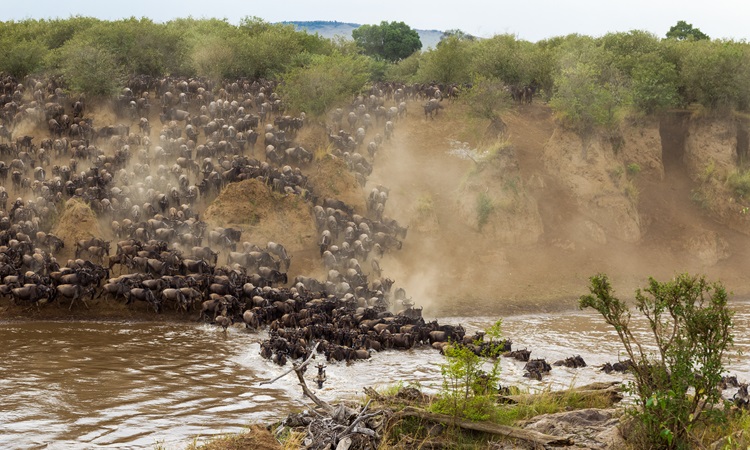
The Best Season For Serengeti Safaris:Final Thoughts
Serengeti National Park is a destination of unparalleled natural beauty and wildlife diversity. From the awe-inspiring Great Migration and the iconic Big Five to the stunning landscapes of the Serengeti plains and the hidden treasures of its kopjes and rivers, the park offers a wealth of attractions that make it a must-visit for any nature lover or safari enthusiast. Whether you’re interested in witnessing dramatic wildlife encounters, exploring the park’s rich cultural heritage, or simply soaking in the breathtaking scenery, the Serengeti promises an experience you’ll never forget.
Activities in Serengeti National Park
Serengeti National Park is not just a destination for wildlife viewing; it offers a diverse range of activities to suit various interests and adventure levels. Here’s a guide to some of the most popular and exciting activities you can enjoy while visiting this iconic park.
1. Game Drives
Game drives are the quintessential Serengeti experience and a fantastic way to explore the park’s diverse landscapes and wildlife.
- What It Is: Guided excursions in 4×4 vehicles that allow you to traverse different habitats within the park, from vast plains to dense woodlands and rocky outcrops.
- When to Go: Game drives are available year-round, but the best time to see the Great Migration and predators varies by season.
- Highlights: Spotting the Big Five (lion, leopard, elephant, buffalo, and rhino), witnessing the Great Migration, and encountering a variety of other wildlife, including giraffes, cheetahs, and hyenas.
2. Hot Air Balloon Safaris
For a unique perspective on the Serengeti, a hot air balloon safari offers a breathtaking view from above.
- What It Is: A tranquil flight in a hot air balloon at sunrise, providing panoramic views of the Serengeti’s plains and wildlife.
- When to Go: Hot air balloon safaris are available year-round, with the best views often occurring at sunrise.
- Highlights: Enjoying the serene experience of floating above the plains, spotting wildlife from the air, and celebrating with a champagne breakfast in the bush after landing.
3. Walking Safaris
Walking safaris offer an intimate and immersive way to experience the Serengeti’s landscapes and wildlife.
- What It Is: Guided walks with an expert ranger, allowing you to explore the park’s flora, fauna, and ecosystems on foot.
- When to Go: Available throughout the year, though it’s often done in the cooler hours of the morning or late afternoon.
- Highlights: Observing smaller wildlife, learning about the park’s ecology and animal tracks, and experiencing the Serengeti from a different perspective.
4. Night Safaris
Experience the Serengeti’s nocturnal world on a thrilling night safari.
- What It Is: Game drives conducted after dark, using spotlights to search for animals that are active at night.
- When to Go: Night safaris are typically available in private concessions and are best enjoyed during the dry season (June to October).
- Highlights: Spotting nocturnal animals such as hyenas, leopards, and owls, and witnessing the Serengeti’s nighttime sounds and behaviors.
5. Cultural Tours
Discover the rich cultural heritage of the Serengeti region through interactions with local communities.
- What It Is: Visits to Maasai villages and other local communities, offering insights into traditional lifestyles, customs, and crafts.
- When to Go: Cultural tours can be arranged year-round.
- Highlights: Learning about Maasai traditions, participating in cultural ceremonies, and purchasing traditional crafts and souvenirs.
6. Bird Watching
The Serengeti is a haven for bird enthusiasts, with over 500 species recorded.
- What It Is: Observing and identifying various bird species in their natural habitats.
- When to Go: Bird watching is excellent year-round, but the wet season (November to April) is particularly good for migratory birds.
- Highlights: Spotting rare and colorful species such as the lilac-breasted roller, the secretary bird, and the Kori bustard.
7. Photography Safaris
Capture the beauty and drama of the Serengeti with specialized photography safaris.
- What It Is: Game drives and excursions tailored for photographers, often with a focus on lighting, composition, and wildlife behavior.
- When to Go: Available throughout the year, with the best times depending on your photography goals.
- Highlights: Professional guidance on capturing wildlife and landscapes, and opportunities to photograph iconic moments like the Great Migration and predator-prey interactions.
8. Rhino Tracking
Rhino tracking offers a chance to see the elusive black rhinoceros in the Serengeti.
- What It Is: Specialized excursions focused on locating and observing black rhinos, often in areas like the Moru Kopjes.
- When to Go: Rhino tracking is available year-round, but sightings are rarer compared to other wildlife.
- Highlights: Tracking the endangered black rhino and learning about conservation efforts to protect this species.
9. Fishing
Fishing is available in certain areas of the Serengeti, offering a different type of adventure.
- What It Is: Catch-and-release fishing in designated rivers and lakes.
- When to Go: Fishing is generally available year-round in designated areas.
- Highlights: Fishing in scenic settings, with opportunities to catch species such as tilapia and catfish.
10. Nature Walks and Exploration
Explore the Serengeti’s diverse ecosystems and landscapes on guided nature walks.
- What It Is: Walks through various habitats, including woodlands, grasslands, and rocky outcrops.
- When to Go: Available year-round, often in the cooler parts of the day.
- Highlights: Learning about the Serengeti’s flora and fauna, discovering hidden gems like rare plant species, and gaining a deeper understanding of the park’s ecology.
Final Thoughts
Serengeti National Park offers a rich tapestry of activities that cater to different interests and adventure levels. Whether you’re drawn to the thrill of game drives, the serenity of hot air balloon safaris, or the intimacy of walking safaris, the Serengeti provides countless opportunities to connect with nature and experience one of Africa’s most iconic wildlife destinations. With its diverse activities, you’re sure to create unforgettable memories on your Serengeti adventure.
Ultimate Serengeti safari tour in Tanzania for 2025/2026
The Ultimate Serengeti Safari Tour in Tanzania for 2025/2026 offers an unforgettable adventure into one of the world’s most celebrated wildlife havens. During this journey, you’ll witness the awe-inspiring Great Migration, where millions of wildebeests, zebras, and gazelles move across the vast plains. Notably, the dramatic river crossings in the north, from July to October, and the calving season in the south, from January to March, highlight this spectacle. Moreover, the safari brings you face-to-face with the Big Five—lions, leopards, elephants, buffalo, and rhinos—as you explore the breathtaking Serengeti landscapes of rolling grasslands and rocky kopjes.
In addition, the Serengeti surrounds you with rich diversity at every turn, whether you soar above the plains on an early morning hot air balloon safari, enjoy close encounters on guided game drives, or immerse yourself in Maasai culture. Finally, this safari offers tailor-made itineraries, ranging from 7 to 10 days, making it perfect for solo travelers, groups, and families. It masterfully blends adventure with relaxation, delivering the ultimate Tanzanian wildlife experience.
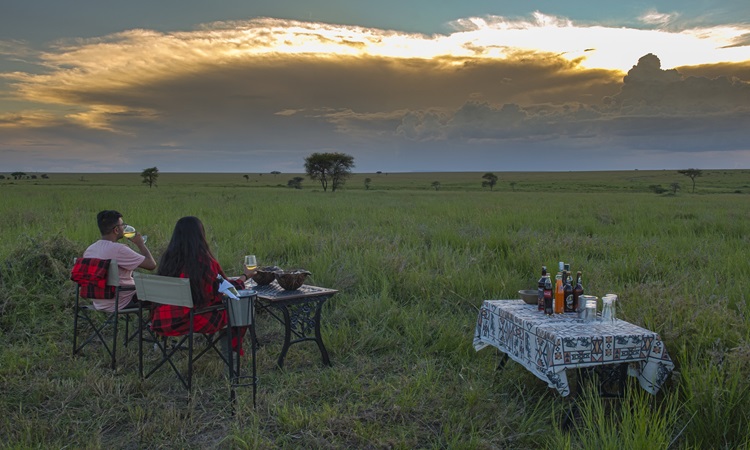
The Best Season For Serengeti Safaris; Price Guide
| Tours | Price (USD) From | More Info |
| 1-Day Serengeti Safari 2025/2026 | From 300 | BOOK NOW |
| 2-Day Serengeti Safari 2025/2026 | From 500 | BOOK NOW |
| 3-Day Serengeti Safari 2025/2026 | From 900 | BOOK NOW |
| 4-Day Serengeti Safari 2025/2026 | From 1200 | BOOK NOW |
| 5-Day Serengeti Safari 2025/2026 | From 1580 | BOOK NOW |
| 6-Day Serengeti Safari 2025/2026 | From 2,400 | BOOK NOW |
| 7-Day Serengeti Safari 2025/2026 | From 3,000 | BOOK NOW |
| 8-Day Serengeti Safari 2025/2026 | From 3,200 | BOOK NOW |
| 9-Day Serengeti Safari 2025/2026 | From 3,432 | BOOK NOW |
| 10-Day Serengeti Safari 2025/2026 | From 3,901 | BOOK NOW |
GET A QUOTE
